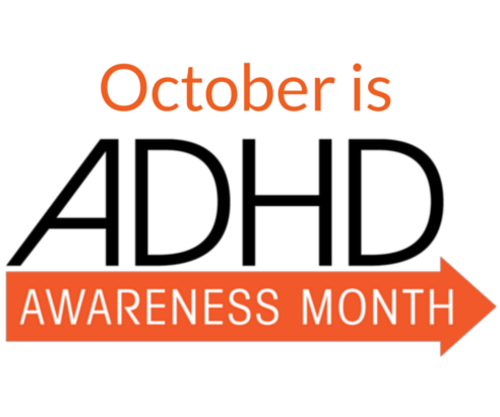|
|
Developmental Biology - ADHD
Mom's Low Thyroid Level Causing ADHD in Children?
Low levels of thyroid in mothers during the first three months of pregnancy may interfere with her baby's brain development...
Thyroid hormones are produced in the thyroid gland located in each of our necks, and thyroid has long been known to influence fetal growth.
For a while, investigators have suspected disruptions in thyroid production —hypothyroidism — may contribute to Attention Deficit/Hyperactivity Disorder (ADHD), the most common neurodevelopmental disorder of children in the USA.
Now, research led by NYU Long Island School of Medicine supports that assumption. Children whose mothers were diagnosed with hypothyroidism shortly before or during the early stages of pregnancy were 24% more likely to have ADHD than children whose mothers do not.
In addition, authors of the research say their findings reveal boys born to hypothyroid women were four times more vulnerable to ADHD than girls whose mothers had hypothyroidism. To date, hispanic children born to hypothyroid mothers have the highest risk of any ethnic group studied.
"Our findings make clear that thyroid health likely has a much larger role in fetal brain development and behavioral disorders like ADHD than we previously understood."
Morgan Peltier PhD, Associate Professor of Clinical Obstetrics, Gynecology & Reproductive Medicine, NYU Winthrop Hospital, NYU Langone Health; lead author.
Among study findings — once a pregnancy reaches second trimester, a woman's hypothyroidism had little effect on her children. A possible explanation, says Peltier, is that by then, the fetus has begun to produce its own thyroid hormones and is less vulnerable to its mother's deficiencies.
The new investigation, publishing Oct. 21 in the American Journal of Perinatology, followed 329,157 children from birth until age 17, all born in Kaiser Permanente Southern California hospitals. It is the first large-scale effort in the U.S. to examine a potential link between a mother's hypothyroidism and ADHD in her children, according to the study's authors. The authors also note that unlike previous research in Europe, the new American study included people of diverse ethnic backgrounds and observed the children for nearly two decades. This long study period, lead author Peltier says, allowed the researchers to better capture cases of ADHD in the children as they aged and progressed through school.
As part of the new research, the team analyzed children's medical records and collected key information about their mothers, including age during pregnancy, race, and household income. All children were evaluated for ADHD using the same criteria, which the authors say helped to prevent inconsistencies in how cases of the disorder were identified.
According to the findings, overall 16,696 children were diagnosed with ADHD. Hispanic children whose mothers had low thyroid hormone levels during pregnancy had a 45 percent increased risk for the neurodevelopmental disorder compared with a 22 percent increased risk in white children whose mothers had the same condition.
Peltier says his team's results are strong enough to warrant careful monitoring of pregnant women with low thyroid hormone levels. He adds that children whose mothers had low thyroid hormone levels during pregnancy could potentially benefit from earlier surveillance for signs of ADHD, such as inattention, hyperactivity, and difficulty focusing on a task. Previous research has found that swift intervention can help manage ADHD and make it easier for children to succeed in the classroom and in learning social skills.
The team next plans to investigate whether hypothyroidism in pregnancy can raise the risk of such neurodevelopmental disorders as:
• epilepsy
• cerebral palsy
• and difficulties with speech
They also intend to explore factors that may increase risk of ADHD, such as exposure during pregnancy to environmental toxins like flame retardants found in upholstered furniture, electronic devices and household appliances.
Abstract
The initial public health response to the breakout of COVID-19 required fundamental changes in individual behavior, such as isolation at home or wearing masks. The effectiveness of these policies hinges on generalized public obedience. Yet, people's level of compliance may depend on their beliefs regarding the pandemic. We use original data from two waves of a survey conducted in March and April 2020 in eight Organisation for Economic Co-operation and Development countries (n = 21,649) to study gender differences in COVID-19-related beliefs and behaviors. We show that women are more likely to perceive COVID-19 as a very serious health problem, to agree with restraining public policy measures, and to comply with them. Gender differences in attitudes and behavior are sizable in all countries. They are accounted for neither by sociodemographic and employment characteristics nor by psychological and behavioral factors. They are only partially mitigated for individuals who cohabit or have direct exposure to the virus. We show that our results are not due to differential social desirability bias. This evidence has important implications for public health policies and communication on COVID-19, which may need to be gender based, and it unveils a domain of gender differences: behavioral changes in response to a new risk.
Authors
Vincenzo Galasso, Vincent Pons, Paola Profeta, Michael Becher, Sylvain Brouard and Martial Foucault.
Acknowledgements
The authors declare no competing interest.
This article is a PNAS Direct Submission.
Return to top of page.
| |
|
Oct 30 2020 Fetal Timeline Maternal Timeline News
 Women with hypothyroidism shortly before or during early pregnancy were 24% more likely to have children with ADHD. CREDIT ADHD Awareness Month.
|



